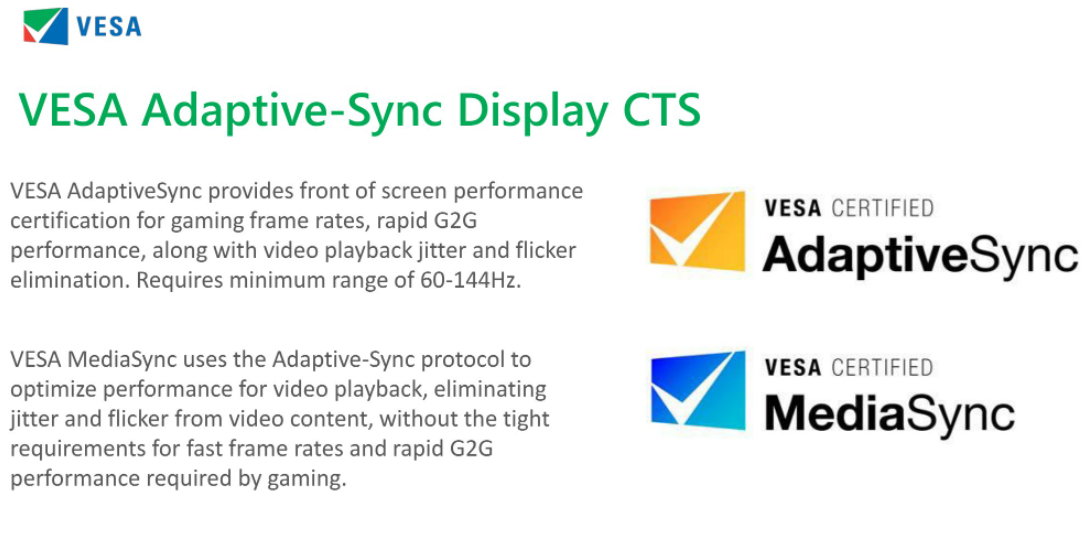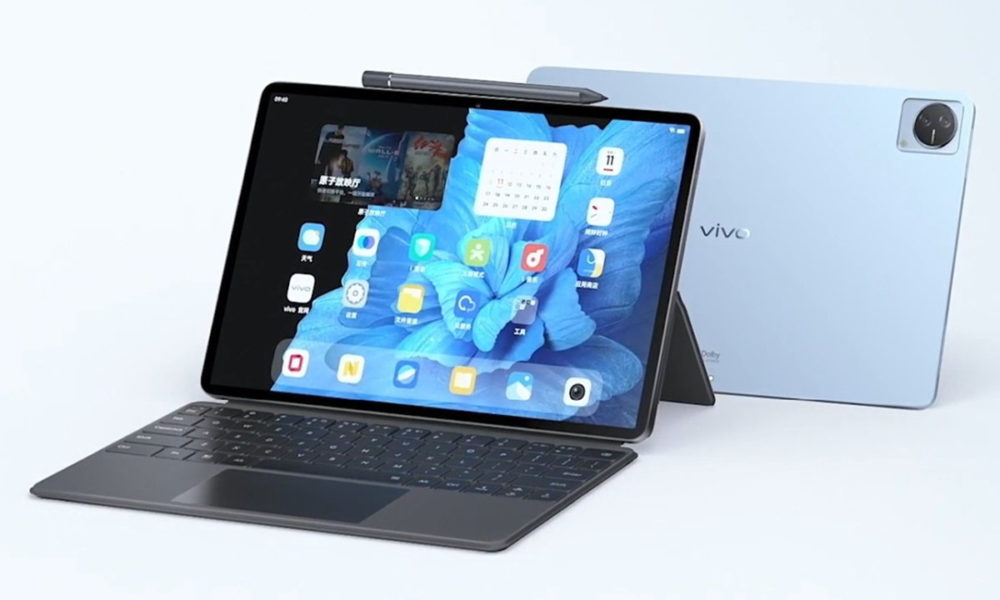
Variable Refresh Rate (VRR) has become an essential feature when buying display screens, especially those specialized to play video games. Knowing that it is important information and that players value it, manufacturers’ marketing departments exalt it to promote their sales. And not always with the desired accuracy.
The VESA industry organization (Video Electronics Standards Association) has announced a new display certification program that must clarify the level of this variable refresh rate. The new standard will join others implemented by the association, including Displayport, VESA screen mounts and DisplayHDR certifications, another piece of information translated by its acronym in English as high dynamic range and which indicates the potential to display images (still or moving) as close as possible to the real world.
VRR: a real mess
You already know that variable refresh rate is a technology that allows screens to change the refresh rate on the fly between a specified range, removing artifacts from images and generally improving the communication between the graphics processor and a display screen, by synchronizing the frequency. This feature does not only apply to games, but it is in this segment that it is most important.
This variable refresh rate is implemented in PCs through a technology called “adaptive sync” (Adaptive Sync) standardized by the VESA organization. It is widely used in the industry and is supported by the major graphics chip providers (NVIDIA, AMD and Intel), by all monitor manufacturers and is also present in some television models. Well supported on operating systems like Windows, it is also used by the latest Xbox Series X consoles and was recently added by Sony for the PS5.
VESA introduced native VRR support with the Displayport 1.2a update in 2014. Graphics card manufacturers support it, but they have specific VRR solutions you’re familiar with like NVIDIA’s G-Sync and AMD’s FreeSync. These providers have pProprietary VRR display certification programs, but they are closed and do not specify what tests and display configurations are involved.
Hopefully, the VESA program should fix it by being more open about their testing procedures and more strict about which screens pass each of the levels, which should help consumers choose them.
Rules for the VRR
VESA has announced the implementation of two levels with two respective logos that manufacturers will be able to use if their screen passes the values defined in the certification. It must be said that VESA only tests and certifies displays compatible with the DisplayPort port, which is more advanced than HDMI in interfaces to connect displays and is more widely used in personal computing.
Also note that the association won’t test any “overclocked” refresh rates offered by manufacturers in the OSD. All certifications will be done on factory default settings, which means that out of the box mode should have reasonable pixel response times with no changes which many times – marketing again – aren’t real at all.
AdaptiveSync
It is the first of the certifications and the most interesting since it is mainly designed for gaming monitors. Requires displays to have a minimum refresh rate of 60Hz and a maximum refresh rate of at least 144Hz. The logo will display the maximum refresh rate supported by the display.
Support for low frame rate compensation will also be mandatory, which helps units stay within VRR range even if the frame rate drops below the minimum refresh rate. The standard will also test gray-to-gray (G2G) response times, which must be less than 5 milliseconds.
That doesn’t sound too impressive, considering many monitors today advertise response times of less than 1ms and refresh rates that have maxed out at 360Hz. However, the VESA tests will be much more stringent and real, which which ultimately interests the consumer.
MediaSync
The second of the certifications is intended for mid-range and entry-level displays and focuses on proper VRR operation for media playback and content creation. It requires a relatively narrow refresh rate range of at least 48-60Hz, but VESA will test for flicker, overshoot, undershoot, and most importantly, jitter.
On a display without 60Hz VRR, watching a 24fps movie will result in even frames being displayed for three refresh intervals, while odd frames will be displayed for two. This is called a 3:2 pulldown and it produces jitter. MediaSync certified displays will work around this, using frame doubling as needed to bring lower frame rates into the monitor’s refresh rate range, with jitter limited to 1ms.
Variable Refresh Rate: What It Is and Why It Matters
In case you are a bit lost with all this, explain beforehand that a PC or game console sends new information to a screen to which it is connected from dozens of times to hundreds of times per second. Each time this happens, the machine tells the screen exactly what to show, the position of each person, place, and thing, and the screen “draws” it.
The static image generated is what we know as a “frame” (frame), while the number of times a computer or console sends images to the screen is the “frame rate”, which you’ll see highlighted as fps. A variable refresh rate allows a screen to display images at the same rate as the number of frames you receive at any given time. And this is very important for games, because unlike other entertainment content such as movies, series or television broadcasts, video games create each frame on the fly.
Depending on what is happening in a video game, the frame rate generated by the graphics card of a PC can vary widely because a static image of a turn-based strategy game has nothing to do with a driving or a running shooter and shooting.
Bearing in mind that a PC with a high-end graphics card can output frames at a tremendous rate (usually much higher than average on monitors or TVs), move images to a screen without variable refresh rate can cause image tearing, juddering, flickering, input lag, and other display artifacts that impair your gaming experience.
In practice, the use of this technology improves image quality, response speed at virtually any frame rate per second, and generally delivers a better gaming experience. That is why VESA certification is important so that the consumer is clear about the level of variable refresh rate (at least minimum) offered by the monitor they are buying.






